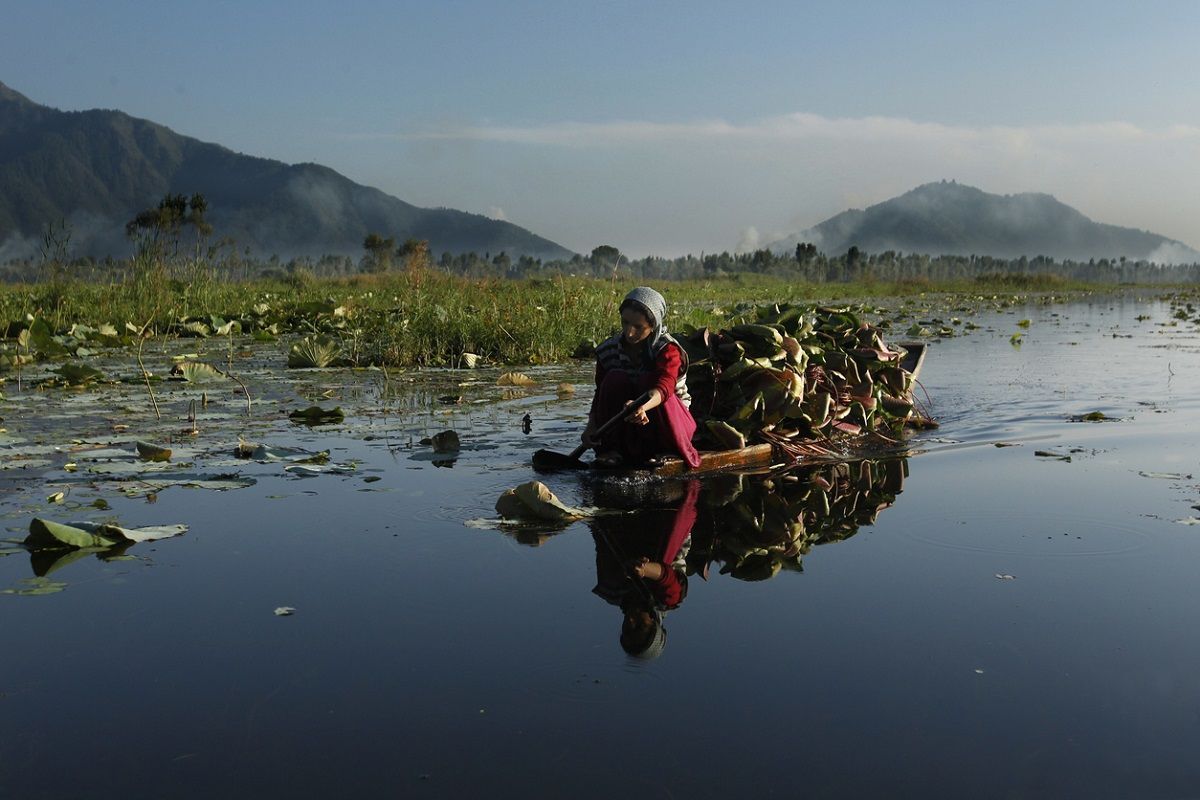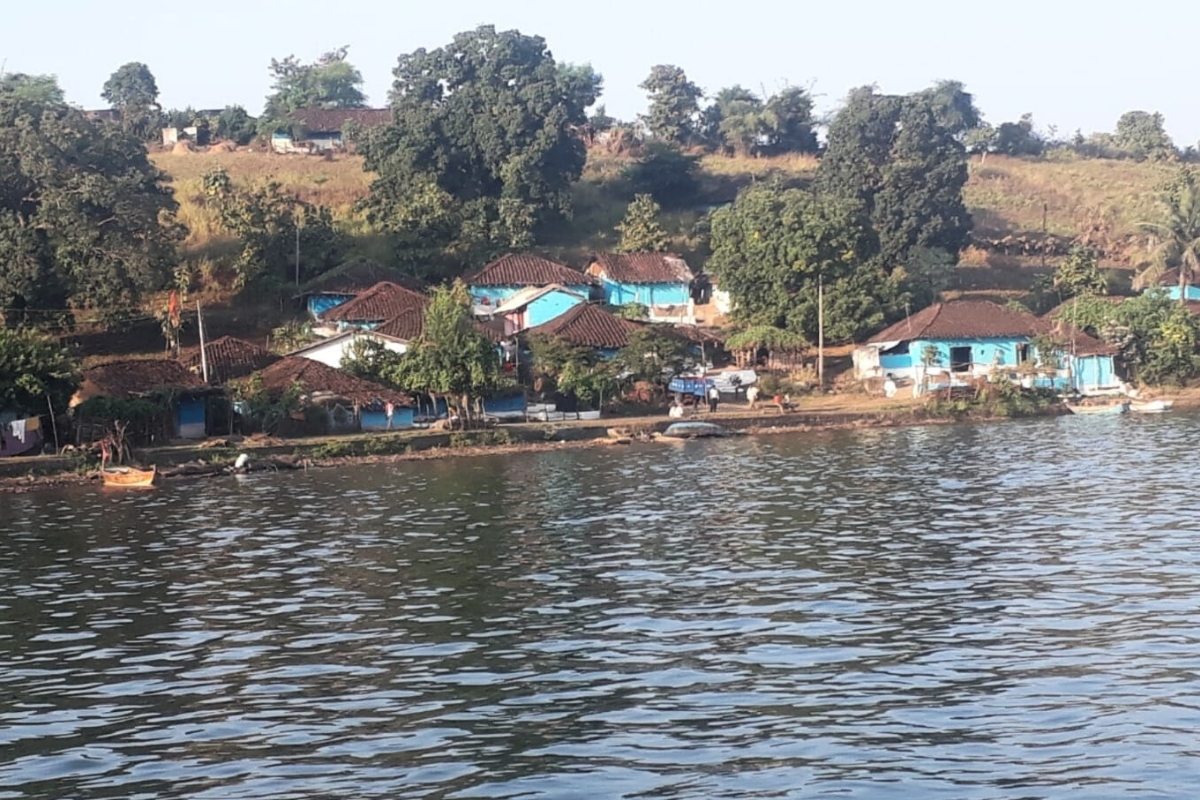In Kashmir, a region known for its landscapes lies a network of wetlands that captivate wildlife enthusiasts and casual observers. Wetlands like Hokersar—dubbed the “Queen Wetland of Kashmir“—are havens for migratory birds and birdwatchers. However, these paradises face challenges, threatening the delicate ecosystems and biodiversity that make Kashmir a hotspot for ornithologists and nature lovers.
Impact on wildlife
In 1969, Hokersar covered 18.13 square kilometers, but now it’s only 13.42 square kilometers, with its open water area dropping from 210 to 45 hectares.
Despite being a Conservation Reserve under the Jammu and Kashmir Wildlife (Protection) Act, 1978, and a designated Ramsar site in 2005, Hokersar has been neglected, experts claimed. Weeds and aquatic vegetation have taken over the open water, while parts of the wetland have become paddy fields or built-up areas. About 10 hectares have been converted into built-up areas, with new housing colonies encroaching on this ecosystem, as per the various studies.
Apart from this, the impact on wildlife, especially migratory birds, has been severe. Marshy areas that serve as breeding and nesting grounds are shrinking due to invasive aquatic plants. This threatens Hokersar’s role as a crucial stopover for thousands of birds, impacting global avian biodiversity. From October to April, approximately half a million birds visit Kashmir, transforming the landscape. These visitors from Siberia, Turkey, Central Asia, and Eastern Europe rely on Kashmir’s wetlands, particularly Hokersar, as crucial stopovers.

The decline is more pronounced at specific Ramsar sites. Hokersar Wetland hosted 4.8 lakh birds in 2020 but dropped to 65,000 in 2021—an 86% decrease, in 2022 saw nearly 4.5 lakh migratory birds and in 2023, 5-6 lakh migratory birds have visited Hokersar with 200 new species of birds.
A study found about 61 species of birds in this wetland, including Migratory ducks and geese which include Brahminy Duck, Tufted Duck, shorebirds, geese, cranes, Gadwall, Garganey, Greylag Goose, Mallard, Common Merganser, Northern Pintail, Common Pochard, Ferruginous Pochard, Red-Crested Pochard, Ruddy Shelduck, Northern Shoveler, Common Teal, Eurasian Wigeon and other species that breed in the northern latitudes of Siberia and Central Asia.
Making Srinagar flood vulnerable
Hokersar is crucial for flood control in Srinagar due to its location along the Jhelum River and 175 square kilometres of flat topography. It absorbs excess water and protects Srinagar from floods. Rapid urbanization and encroachment have degraded many wetlands in the Jhelum floodplains. The total area of major wetlands in the Jhelum basin has decreased from 288.96 to 266.45 square kilometres, with 20 wetlands lost to urban development, particularly in southern Srinagar.
According to various studies, Hokersar faces problems due to poor management, causing siltation and uncontrolled weed growth. The 2014 floods worsened the situation, dumping tons of silt and disrupting water flow.
Water quality is a major concern. A study by local researchers from Sher-e-Kashmir University of Agricultural Sciences and Technology (SKUAST-K) found high levels of pollutants – nitrates, phosphates, and trace elements – entering the wetland, leading to high biological oxygen demand (BOD) and severe pollution that threatens the ecosystem.
In April this year, the Central Pollution Control Board informed the National Green Tribunal (NGT) that the Biochemical Oxygen Demand (BOD) and pH levels in Dal Lake and nine other wetlands in Kashmir have risen. This followed a report from a local magazine, which led the NGT to take action. The J&K Pollution Control Committee confirmed these findings in April 2024, highlighting problems with solid waste management and illegal dumping.
The report revealed that the wetlands including Hokarsar are deteriorating due to unchecked sediment deposits, leading to shallowing, higher temperatures, and increased BOD and pH levels.
Beyond Hokersar: Other wetlands in Kashmir
Hokersar’s challenges are shared by other wetlands in Kashmir. Shallabugh Wetland in Ganderbal and Hygam Wetland in Baramulla face threats from urbanization, agricultural expansion, and pollution. These wetlands are crucial for waterfowl, local ecosystems, and livelihoods.
In Ganderbal, the 16.0 square kilometers Shallabugh Wetland is a haven for migratory birds from Siberia, Central Asia, Northern Europe, Ladakh, China, and Central Asia, including Geese, Bar-headed Geese, Shoveller, and Greylag. Pintail, Common Teal, and Gadwall are abundant.

Hygam Wetland, 7.25 square kilometers in District Baramulla, has reed beds and is a crucial waterfowl habitat. It supports local livelihoods through reed business and fishing, but encroachments and environmental changes threaten it.
Migratory bird decline and urbanization impact Kashmir
In recent years, migratory birds in Kashmir’s wetlands faced challenges. Bird enthusiasts noticed a significant decline. The Annual Asian Waterbird Census reveals the severity: in 2020, Kashmir had 807,554 birds. However, by 2021, the number dropped to 648,322—a nearly 20% decrease.
Dr. Irfan Rashid, senior assistant professor at the Department of Geoinformatics, University of Kashmir, attributes the decline to land-system changes, rapid urbanization, and increased agricultural activities around wetlands.
“Wetlands in Kashmir are shrinking due to unplanned land system changes affecting their flood retention. Built-up areas are expanding at the expense of agricultural fields. The absence of a wetland conservation policy has led to encroachments, turning wetlands into concrete jungle,” Rashid said.
Conservation challenges and efforts in Kashmir’s wetlands
Despite challenges, there’s hope for Hokersar. The Department of Wildlife Protection claims to have reclaimed over 2,000 kanals (about 250 acres) of encroached land, but Wildlife Warden Wetlands Ishfan Deva says more needs to be done. They call for proper demarcation and fencing of the wetland boundaries, and scientific measures to prevent further damage.

Saving Hokersar requires coordination between government departments and input from national and international specialists. The experts envision Hokersar becoming a wetland conservation model in Jammu and Kashmir.
Kashmir’s wetlands are crucial for the region’s ecological health and biodiversity but need better conservation and sustainable management. Bhat’s research identifies 29 wetlands across the former state of Jammu and Kashmir, with 16 in the Kashmir valley, eight in Jammu, and five in Ladakh. Despite conservation plans, their effectiveness is questionable due to declining avian populations and habitat degradation.
Kashmir’s wetlands and the migratory birds that depend on them are at a critical point. The coming years will determine if these avian paradises can be safeguarded or succumb to development and neglect.
Keep Reading
Lightning strikes leave two children without their mother in West Bengal
In Jammu, lightning strikes kill livestock, compensation not adequate say shepherds
Indigenous communities in J&K struggle with increasing lightning risks to livelihoods
Follow Ground Report for Environmental News from India. Connect with us on Facebook, Twitter, Koo App, Instagram, Whatsapp and YouTube. Write us at GReport2018@gmail.com and subscribe to our free newsletter.
Don’t forget to check out our climate glossary, it helps in learning difficult environmental terms in simple language.








